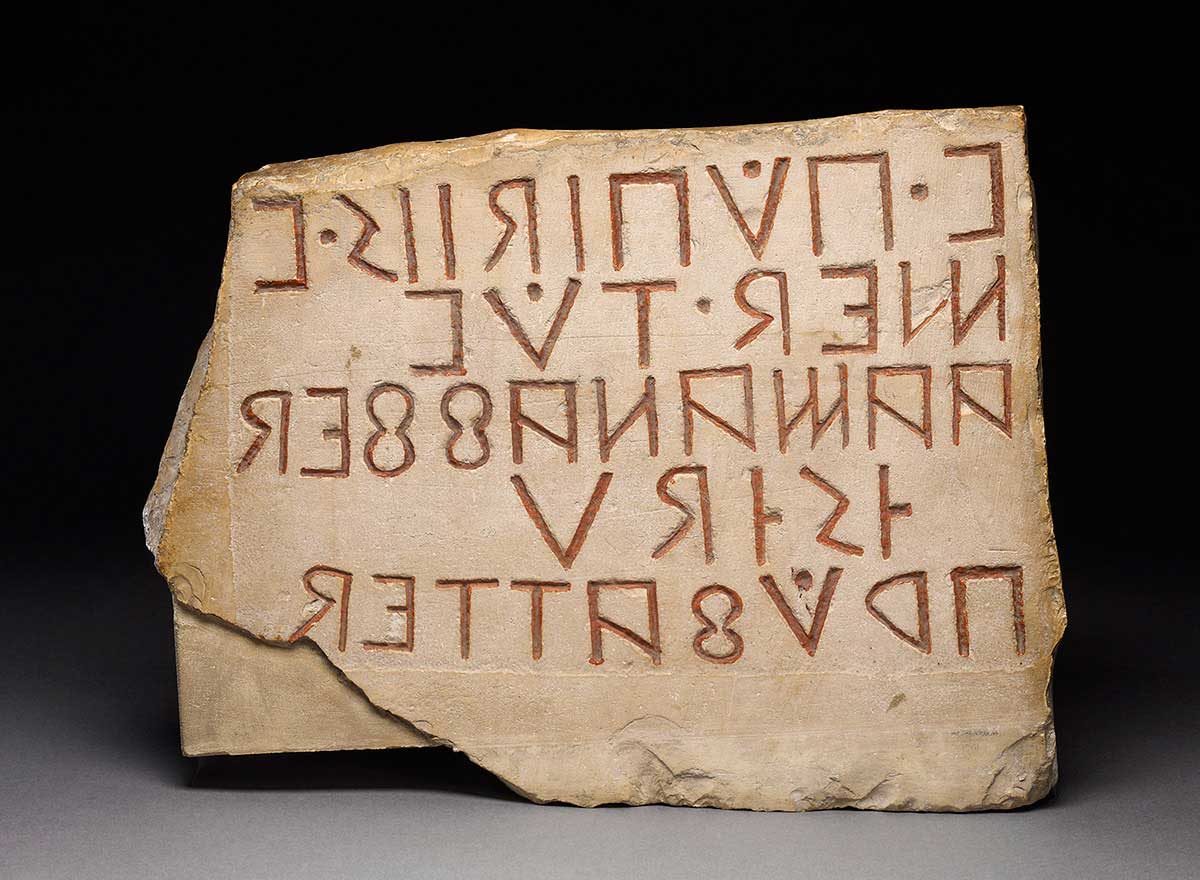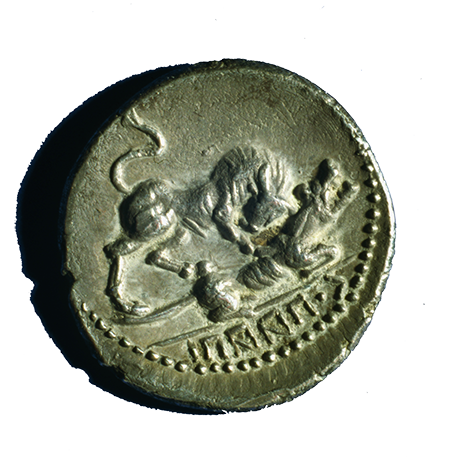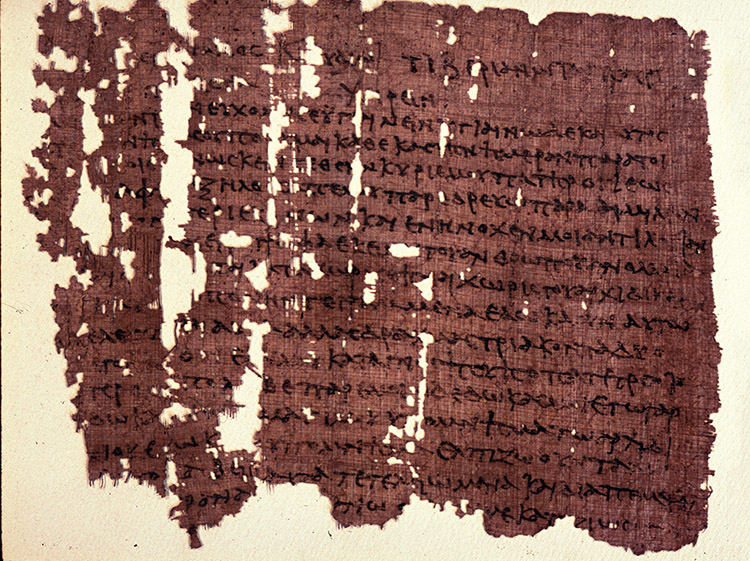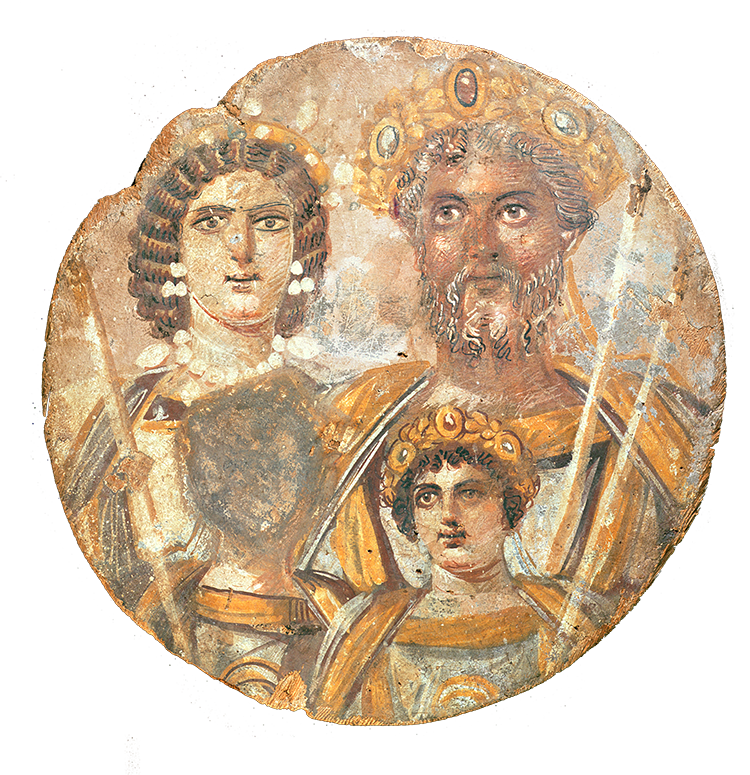The Language of the Roman Empire
What language did the Romans speak? Latin was used throughout the Roman Empire, but it shared space with a host of other languages and dialects...

Latin may be the language that we associate with the Roman Empire, but the question of whether the Romans spoke Latin does not have a simple answer. Rome grew from a tiny community in the middle of a culturally diverse peninsula into an empire that reached from Britain to Syria. As Rome’s power spread, Romans interacted with speakers of dozens of other languages – and made them into fellow citizens. The Romans’ love of Greek culture meant that the Greek language also had a central place in Roman society, while Rome itself was a city of immigrants and slaves, many of whom brought their languages with them.
Rome and Italy
Rome started life as just one of many small urban communities in the Italian peninsula. Latium, the region on the west coast of Italy which contains the city of Rome, gave its name to the local language: Latin. But Italy was host to many other languages, some closely related to Latin. Faliscan, for example, was spoken in cities very close to Rome and some linguists consider it to be a dialect of Latin rather than a separate language. Other related languages belonging to the ‘Italic’ family include the widely spoken Oscan (central and southern Italy) and Umbrian (central Italy). Greek, a more distantly related language, was spoken in cities all along the coastline. Another prestigious neighbouring language, Etruscan, was not related to Latin at all: it is a non-Indo-European language and may not be related to any other known language.
We know that speakers of Latin interacted with speakers of these other languages and that some Roman citizens were multilingual. This is partly due to archaeological evidence; it would be extremely unlikely that the trade, exchange and adaptation of goods that we see taking place across Italy could exist without at least a few bilingual individuals. Even the Roman alphabet was adapted from the Etruscan one, which could not have happened without some kind of conversation between Etruscan- and Latin-speakers.
Contact between languages also had a lasting impact on Latin itself. We can tell that some Latin words were originally borrowings from other languages. In the same way that we can tell from their sound and spelling that karaoke and déjà-vu are unlikely to be words of English origin, even though they are now fully integrated into the vocabulary of English-speakers, there are words in Latin that show telltale signs of being loan words.
It is not surprising that a lot of these borrowed words are relevant to domains such as farming, the countryside and trade, all areas of life where contact between speakers of different languages would have been common. For example, the Latin word lupus ‘wolf’, from which we get the flower name lupin, has a p sound in a place where Latin would usually have a k sound (generally spelled with a c). The b of the word bos ‘cow’, from which we get bovine, would also be an exception to the sound laws of Latin. These words must be borrowed from a nearby language, probably one similar to Oscan or Umbrian.
We do not always know the source language for loan words. The unit of volume litra, from which the modern measurement litre is derived, has its origins in an unknown non-Latin language, probably a Sicilian one, which has left few other traces behind.
Latin was especially prone to borrowing colour names, probably because of the frequent trade in furs or fabrics with its neighbours. Sometimes the borrowing results in a ‘doublet’, or two words of the same etymological origin which have come into Latin via different routes. For example, ruber and rufus both mean ‘red’ or ‘reddish’ and both come from the same Indo-European word. But the former is the ‘native’ Latin term and the latter is borrowed from a neighbouring language. The English name Rufus is a direct result of the Romans’ early multilingualism.
Borrowings in Latin are not all to do with country life. An early form of Roman theatre called ‘Atellan farce’, mentioned by the Roman authors Suetonius, Cicero and Tacitus, was based on earlier drama written in Oscan; Roman authors show us that some Oscan was retained in Roman productions. The name Casnar, for example, means ‘old man’ in Oscan and is the name given to the bumbling ‘old man’ stock character. It is possible that these Punch and Judy-style slapstick shows were even performed in Oscan at Rome, though the audience may not have needed to understand much of the dialogue to get the joke. Latin took other theatre-related terms from Etruscan, such as persona – ‘theatrical mask’ – from Etruscan phersu, giving us our words persona and person; and from Greek, such as scaena ‘stage’ from skene, giving us the word scene.
Language death
These other languages – Etruscan, Oscan, Umbrian, Faliscan and many more – were spoken and written in Italy for centuries. Most seem to have survived into the first century BC, well into the period when Rome had already started to expand its territories overseas.
As long as the communities of Italy were ‘allies’ of Rome, rather than being run directly as part of the Roman state, their languages tended to survive. Some cities that were independent from Rome started using Latin by choice. Livy tells us, for example, that the city of Cumae, the first Greek colony in southern Italy, which had started using Oscan as its main language around the fourth century BC, petitioned Rome in 180 BC to be allowed to adopt Latin as its official written language, flagging up the switch from Oscan to attract the notice of their increasingly powerful Roman neighbours.

For other communities, linguistic change was less peaceful. In the early first century BC, the Italian allies went to war with Rome, setting up an alternative state called ‘Italia’. This conflict is known as the ‘Social War’, because it was a war against allies, or socii. It is an ongoing matter of debate whether the allies were fighting for full Roman citizenship and voting rights, or whether they wanted to end their ties with Rome once and for all after decades of tension. Probably both of these motivations – and others – existed among the tens of thousands of soldiers, who came from all across Italy.
Some historians have interpreted the allies’ use of the Oscan language as a defiant statement of non-Roman identity, particularly when taken alongside the imagery of the Italian bull trampling the Roman wolf on their official coinage. But we cannot ignore that the majority of Italia’s coinage was bilingual, suggesting that Latin was already the lingua franca among its multilingual forces.
The Social War affected the landscape of some of Italy’s most famous cities, including Pompeii. Some of the most evocative and most frequently ignored dipinti (painted inscriptions) at Pompeii are the scattering of Oscan messages painted at key points on the main roads, known as the eítuns inscriptions (after their first word). These bright red texts functioned as a set of safety instructions, telling the men of the town where to gather and to whom they should report in the event of a Roman invasion. They suggest that some of the men of Pompeii would not struggle to read Oscan in a high-pressure situation.
These messages were written not during the early history of the Roman republic, but while a teenage Cicero was doing his military service. They were written by the last generation of the city who could read and write Oscan: after the Social War, Latin-speaking Roman colonists were sent to settle in Pompeii and many of the other towns of Italy to prevent future rebellions. The texts survive because they were plastered over or hidden behind shop awnings and because the distinctive right-to-left Oscan alphabet would not have meant much to the later occupants of the town.
Domination
All the languages of Italy other than Latin (and Greek) died out. Language death can occur when all the speakers of a language die or are killed or, more commonly, when speakers stop passing on their language to their children. Once language death is underway, it can be quick: it typically takes just three generations for all knowledge of a language to be lost. In Italy, the disruption and population movement caused by the Social War and the Civil Wars meant that communities lost cohesion and had to abandon their former languages.
Etruscan had a slightly longer life than Oscan or Umbrian because of its prestige as a traditional language of divination and fortune-telling in Rome. The last Roman to speak Etruscan was the emperor Claudius, who wrote a 20-volume history of Etruria and, the historian Tacitus tells us, was keen to keep Etruscan traditions alive at Rome. But even Claudius was learning Etruscan to access historical sources, not to speak to his subjects. By the turn of the first century AD, the economic advantages and practicality of learning Latin ultimately outweighed any lingering feelings of linguistic identity or tradition and meant that other languages were not transmitted to the next generation. Latin now dominated the Italian peninsula.
Both our languages
Latin was not the only language of the Roman Empire, nor even the only language of Italy. As Rome expanded its control to both east and west, it encountered many other languages. Most significantly, it inherited a pre-existing Greek administrative system in the areas which became the eastern half of the Roman Empire.
There was no need for the Romans to overhaul this system and replace it with Latin. Brought up on an educational diet of Greek philosophy, rhetoric and drama, Roman men were usually fluent in Greek from a young age. Using Greek was convenient for the Roman elite and the use of Greek continued in the eastern half of the Empire throughout the period of Roman rule.
Because fluency in Greek and knowledge of Greek culture was shared by all Roman elite men, using Greek was often a sign of intimacy and closeness. In Cicero’s letters, which were gathered for publication after his death by his secretary Tiro, he uses Greek sentences, phrases and words, particularly with his close friend Atticus. They even make bilingual puns to each other and discuss how certain words should be translated. Letters between the emperor Augustus and his step-son Tiberius, as recorded by later historians, also show this ‘code-switching’ between Latin and Greek.
Although Shakespeare records Julius Caesar’s last message to Brutus as ‘Et tu, Brute?’ (‘You too, Brutus?’), Suetonius reports the famous final words as the Greek kai su teknon (‘you too, child?’). Interpretations differ on whether Caesar was questioning Brutus’ motives, claiming paternity or issuing a threat (‘you’re next, young man!’). Suetonius claims not to believe that Caesar spoke any last words at all. But the idea that Caesar would reach for Greek, not Latin, to express himself in a moment of high emotion and pain shows just how embedded Greek was in Roman life.
Dealing with bureaucracy in Greek, therefore, was no big deal at all to the Roman aristocracy and the overwhelming majority of the Roman official material we find in the east is in Greek. This linguistic split between east and west made Rome a fully bilingual empire. Suetonius reports that the emperor Claudius joked that Greek and Latin were ‘both our languages’ and that bilingualism is found everywhere in Roman life.

It was not just the Roman elite who spoke Greek. People from all professions and walks of life spoke and wrote in Greek, although it is impossible for us to know much about the languages used by the illiterate majority. Tradesmen, craftsmen and soldiers are all well-represented in our sources, though, and show how ordinary people throughout the Roman Empire used both Latin and Greek. In a museum in the Sicilian capital Palermo an inscription written in both Greek and Latin shows how bilingualism could be a marketable skill. The inscription is an advertisement from outside a stone-cutter’s shop and reads something like: ‘Get your public and private inscriptions made here.’ The inscription is bilingual, not just to attract a wider audience, but also to demonstrate the craftsman’s skill in carving both alphabets. Linguists have suggested that the slightly unusual phrasing in both halves might mean that the stone-cutter was not a native speaker of either Latin or Greek: his mother tongue might have been Punic, a Semitic language spoken in North Africa. But whatever the native language of the stone-cutter, this sign declares him competent enough to carve an elaborate inscription in either of Rome’s languages.
Letters home from soldiers show another side of how the Romans used Greek. Like letters written by elite Roman men, letters from soldiers show ‘code-switching’ between Latin and Greek, suggesting that they and their families could read both languages, or at least understand them if a scribe read the letter aloud. The most famous military letter writer is Claudius Terentianus, a soldier stationed in Egypt in the second century AD. We have a small collection of surviving letters from Terentianus to his father Claudius Tiberianus, an army veteran.
The letters use both Latin and Greek and it is not clear why Terentianus switches between the two. Various suggestions have been made. It may be, for example, that Latin-speaking scribes were not always available and so Terentianus – who would have followed the normal Roman practice of dictating to a scribe rather than writing letters by hand – made use of whatever language was available. An alternative explanation is that he wrote in Greek mainly when he wanted to include his mother and sisters in the letter and wrote in Latin to discuss military matters with his father. This explanation relies on the idea that the father and son were the bilingual members of the family as a result of their military service. Another alternative is that Greek was used for more personal topics and Latin for more formal or impersonal content. None of these explanations covers everything and it is likely that Terentianus was comfortable using both languages for a range of topics.
The other major Greek-speaking group in the Roman Empire was slaves. Over the course of Roman history, hundreds of thousands of people were trafficked into Italy. They were taken from all parts of the Empire, but the majority appear to have come from Greek-speaking areas in the East. Many of these slaves probably had another mother tongue but could speak Greek as a second or third language. Most would also have had no choice but to learn Latin if they were taken to the West. Roman literature shows that native Latin-speakers made fun of slaves and freedmen, whose Latin was peppered with Greek words and expressions. In Petronius’ novel Satyricon, written in the first century AD, the ‘uncultured’ freed slaves are the butt of the narrator’s jokes. Their use of Greek swear words and idioms is supposed to demonstrate their lack of education, alongside nouveau riche displays of wealth. In the Roman imagination, Greek was the language of slaves as well as the language of high culture.
Language of power
Romans therefore had an ambivalent relationship with the Greek language. They admired the Greeks who had lived centuries before them and envied the Attic dialect in which figures such as Plato, Demosthenes and Sophocles had written. Roman writers of the first centuries BC and AD bemoaned the poverty of Latin and apologised (maybe protesting too much) for trying to write poetry, technical treatises or philosophy in such an uncooperative tongue. But the contemporary Greek language, which was usually Koiné Greek rather than Attic, did not have such lofty associations. To the Romans, Koiné Greek was a practical language of administration and the language of conquered peoples.
The Romans’ attitude was that, despite the prestige or practicality of Greek for some purposes, there were times when Latin was the only appropriate language. Cicero’s personal letters may switch between Greek and Latin, but in his professional capacity as a lawyer and politician he wrote only in Latin. His political speeches avoid even using Latin words borrowed from Greek. Cicero tells us that he once used Greek to give a speech in Sicily, where Greek was the majority language, and he was criticised by his fellow citizens for this linguistic faux-pas. Even though the elite was bilingual, there were social consequences to seeming too Greek, especially when acting in an official capacity.
This matches evidence found in Egyptian papyri. While most Roman administrative records were kept in Greek, some key phrases and formulae had to be in Latin. For example, records of court cases usually give all the witness statements and lawyers’ arguments in Greek, but the court’s final decision is recorded in Latin. For this reason, linguists have sometimes categorised Latin in the Greek east as a ‘super-High’ language, used to confer legality on official proclamations of the state.
Some documents were only legal and binding if written in Latin. Wills, for example, had to include specific formulae in Latin to be considered valid, until the law was changed in the third century AD. Greek-speaking Roman citizens who wanted to take advantage of their legal right to make a will would need to employ a specialist to make sure that the document was binding. Mixed-language wills, which include Greek lists of possessions alongside the Latin legal phrases, show that getting the language of these texts right was sometimes a challenge.
There were, therefore, clear legal and economic advantages to being able to speak Latin. We have plenty of evidence that Greek-speaking citizens and non-citizens of the Roman Empire wanted to learn Latin and that both schoolchildren and adults sought out language-learning resources. Eleanor Dickey’s recent book, Learning Latin the Ancient Way, gives an accessible introduction to these texts, most of which have been found on papyri from ancient Egypt. Unlike modern students of foreign languages, who generally learn sentences or phrases, ancient school pupils learned whole Latin paragraphs or stories off by heart, with side-by-side translation in Greek to assist them.
There is also evidence of helpful phrase books and word lists for travellers, guiding speakers through a range of common situations. Many Roman citizens wanted to learn Latin for day-to-day practical reasons, not for reading poetry, and so they were more interested in speaking Latin than reading it. Rather than dealing with an unfamiliar script, they bought phrase books, where the Latin was transliterated into the Greek alphabet, much as an Arabic phrase book for English-speakers might look today.
A growing empire
As the Empire grew, Roman citizens came from further and further afield. The wealthy citizens were pulled towards the city of Rome by the promise of power and political engagement and they brought with them a range of languages. There was a prominent Palmyrene-speaking community in Rome for centuries, made up of migrants from Syria and their descendants.
The use of Latin also continued to spread, particularly in the western half of the Empire. Just as Etruscan and Oscan had influenced the vocabulary of Latin many centuries earlier, other languages now borrowed from Latin. We can see the legacy of this in, for example, the large number of Latin borrowings found in Welsh. Words like caws ‘cheese’ and llaeth ‘milk’ were borrowed directly from Latin caseus and lac. The influence of Latin on Celtic in Britain is so strong that even common words, such as the names of body parts, were borrowed. Welsh boch ‘cheek’ is, for example, a loan word from Latin bucca.

The empire was also getting big enough that regional varieties of Latin started to develop. As a result, Latin did not sound the same everywhere. By the second century AD, even some of the emperors were from outside Italy and they noticeably did not sound the same as the aristocracy in Rome. The emperor Hadrian had a strong ‘Spanish’ accent, though sources are vague about exactly how it sounded. He spoke Latin fluently, but sounded unsophisticated to his contemporaries. Septimus Severus was a native speaker of Punic, the language of North Africa, and never managed to shed his African accent. According to the Historia Augusta, his sister could scarcely speak Latin at all and was sent back to Africa in disgrace. Without the literary education given to their brothers, wealthy Roman women sometimes struggled to pick up enough Latin to pass muster in high society.
We do not know whether multilingualism in the provinces caused these regional changes to the Latin language. In general, the larger a language grows, the more likely it is to develop separate dialects and regional forms, so it is likely that Spanish Latin would have sounded different from African Latin, even if no other languages had been spoken in those areas. We do not know enough about the languages on the edges of the Roman Empire to be certain of the effects they might have had on Latin.
Whatever the cause of the regional changes to Latin, it is probable that in the imperial period we can see the seeds of the regional differences that would turn Latin into French, Spanish and Italian. The Romans of the western half of the empire never stopped speaking Latin, but Latin diverged, eventually becoming the Romance languages of today.
So what language did the Romans speak? Some of them spoke Latin. Some spoke Greek, Punic or Oscan. Some spoke two or more languages. Some learned Latin at school, or in their free time. Multilingualism was a part of daily life in the Roman Empire and it affected everyone, from the imperial family to their soldiers, from senators to their slaves.
Katherine McDonald is Lecturer in Classics and Ancient History at the University of Exeter and the author of Oscan in Southern Italy and Sicily (Cambridge, 2015).
This article was originally published in the November 2017 issue of History Today under the title 'Latin Lesson'.






